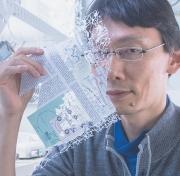経歴
-
2012年-継続中
早稲田大学 理工学術院(電気・情報生命工学科) 教授
-
2007年-継続中
metaPhorest(生命美学プラットフォーム) 主宰
-
2005年-2012年
早稲田大学理工学術院助教授・准教授(電気・情報生命工学科)
-
2004年-2007年
理化学研究所バイオミメティックコントロール研究センター客員研究員
-
2005年-2006年
東京大学大学院生命農学研究科非常勤講師
-
2000年-2005年
名古屋大学大学院理学研究科生命理学専攻・助手
-
1999年-2000年
日本学術振興会特別研究員(PD)
-
1997年-1999年
日本学術振興会特別研究員(DC1)


Click to view the Scopus page. The data was downloaded from Scopus API in December 12, 2025, via http://api.elsevier.com and http://www.scopus.com .